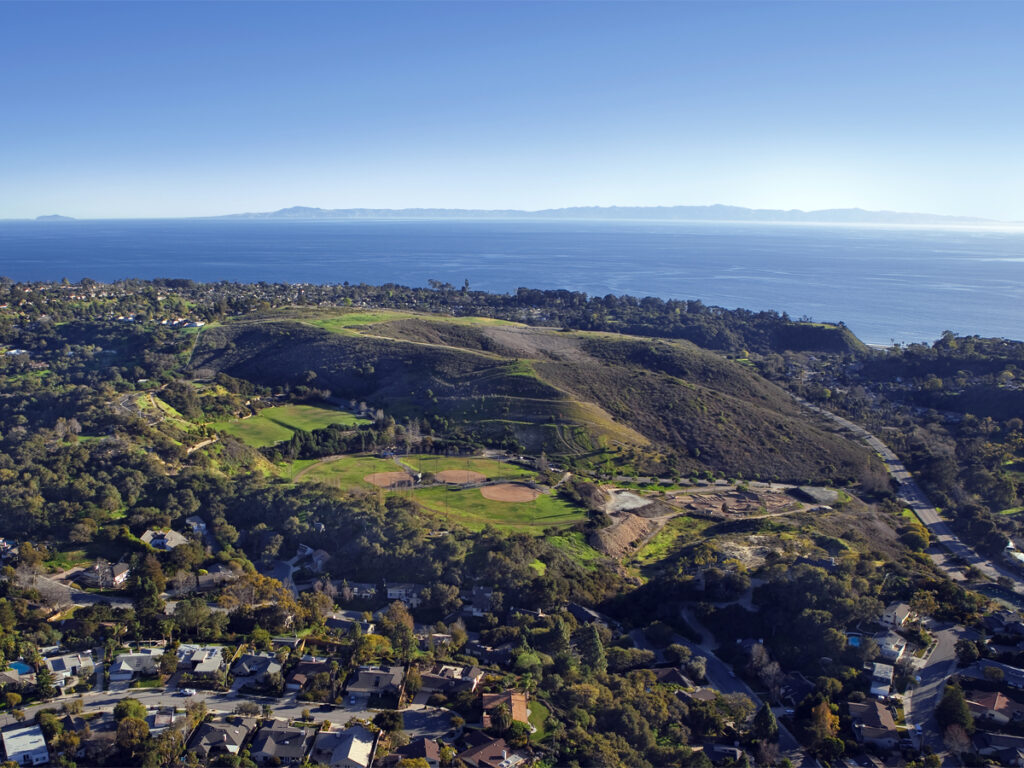Ocho "Paseos por la Naturaleza" marcan el inicio de una nueva colaboración entre el Jardín Botánico de Santa Bárbara y Elings Park
El jueves 11 de mayo comienzan las excursiones gratuitas a Elings Park con un "Bioblitz" para examinar la biodiversidad del parque y recopilar datos como parte de un proyecto más amplio de transformación del paisaje.

Santa Barbara, California - 5 de mayo de 2023 - Se invita al público a participar en una serie de ocho paseos gratuitos por la naturaleza para explorar la biodiversidad de los 230 acres del Parque Elings, como parte de una nueva colaboración entre el Parque y el Jardín Botánico de Santa Barbara. Cada paseo se centra en una historia natural diferente, como las plantas, los polinizadores o las aves, y están dirigidos por expertos del Jardín.
El primer acto, que se celebrará el jueves 11 de mayo de 9.00 a 12.00 horas, es un "Bioblitz" del Parque dirigido por la doctora Denise Knapp, directora de conservación e investigación del Jardín, y Annie Ayers, técnica del herbario. Tras un breve tutorial, los participantes utilizarán la aplicación iNaturalist en sus teléfonos inteligentes para registrar los polinizadores, aves, insectos, plantas, etc. que descubran durante el paseo. No es necesario reservar. Reunión en el aparcamiento adyacente al edificio de administración del parque. Los participantes deben descargar e iniciar sesión en iNaturalist(www.inaturalist.org) antes del paseo.
Los datos recogidos en este paseo se utilizarán como parte de un esfuerzo de colaboración más amplio entre los dos socios y el público para transformar una sección del Parque de plantas invasoras a plantas autóctonas y documentar los efectos. Hay programados otros paseos, una vez al mes, hasta finales de 2023 (véase más abajo). Para más información, visite www.SBBotanicGarden.org/calendar.
"Invitamos al público a unirse a nosotros en la recuperación de esta parte de Elings Park para que puedan ver de primera mano el poder de las plantas autóctonas de California", dice el Dr. Knapp. "En última instancia, a través de esta experiencia, esperamos que nuestra comunidad salga inspirada y comience transformaciones en patios traseros y paisajes en todo el condado de Santa Bárbara y más allá."
Futuros paseos por la naturaleza
Sábado 24 de junio, de 9 a 10 h - Elings Park y sus plantas
A cargo de la Dra. Denise Knapp, Directora de Conservación e Investigación del Jardín, y Annie Ayers, Técnica del Herbario.
Sábado 15 de julio, de 9 a 10 h - Polinizadores
Dirigido por la Dra. Sarah Cusser, Ecóloga de Conservación de Invertebrados Terrestres del Jardín, y Kylie Etter, Técnica de Conservación.
Sábado 19 de agosto, de 9 a 10 h - Plantas invasoras
A cargo de la Dra. Denise Knapp, Directora de Conservación e Investigación del Jardín, y el Dr. Jorge Rentería Bustamante, Ecólogo Aplicado.
Sábado 16 de septiembre, de 9 a 10 h - Polinizadores
Dirigido por la Dra. Sarah Cusser, Ecóloga de Conservación de Invertebrados Terrestres del Jardín, y Kylie Etter, Técnica de Conservación.
Sábado 21 de octubre, de 9.00 a 10.00 horas - Aves
Dirigido por Scot Pipkin, Director de Educación del Jardín, y Zach Philips, Doctor en Ecología y Conservación de Invertebrados Terrestres.
Sábado 18 de noviembre, de 9.00 a 10.00 horas - Plantas y bichos
Dirigido por el Dr. Zach Philips, Ecólogo de Conservación de Invertebrados Terrestres del Jardín, y José Flores, Técnico de Conservación.
Sábado 16 de diciembre, de 9 a 10 h - Aves
Dirigido por Scot Pipkin, Director de Educación del Jardín, y Zach Philips, Doctor en Ecología y Conservación de Invertebrados Terrestres.
Transformación de Elings Park
"Aunque Elings Park está a pocos pasos de miles de residencias, algunas partes siguen siendo sorprendentemente salvajes", dice Dean Noble, director ejecutivo de Elings Park. "Muchas personas que disfrutan de nuestras instalaciones deportivas y actos culturales nunca han visitado nuestros pintorescos South Bluffs. Con la experiencia del Jardín Botánico de Santa Bárbara, podemos transformar ese paisaje y animar a la próxima generación de científicos de la comunidad."
Elings Park se inauguró en 1985 como resultado de una campaña comunitaria para convertir el antiguo vertedero en un parque público. El parque, que en un principio abarcaba 90 acres, se amplió a 230 acres en 1994 con la compra de una propiedad adyacente.
Se trata de un paisaje diverso en el que conviven el ocio y los ecosistemas naturales. Jóvenes y adultos disfrutan de ligas de softball, fútbol, rugby, lacrosse y tenis. Hay zonas especiales dedicadas a carreras de BMX, ala delta, parapente, disc golf y coches y aviones teledirigidos. Es un lugar popular para bodas y acontecimientos especiales.
Pero una gran parte del Parque, aproximadamente el 75%, está sin urbanizar. Nueve millas de senderos atraviesan sombreados robledales y soleadas laderas orientadas al océano cubiertas de chaparral. Las plantas no autóctonas, que han invadido los paisajes naturales, han sido el objetivo de los recientes esfuerzos del Parque por restaurar el hábitat. En los dos últimos años se han plantado más de 250 robles autóctonos de California, además de cientos de hierbas y arbustos autóctonos. En las tres últimas primaveras, se ha traído un rebaño de ovejas para eliminar las malas hierbas de forma ecológica y prevenir incendios.
 Donar
Donar